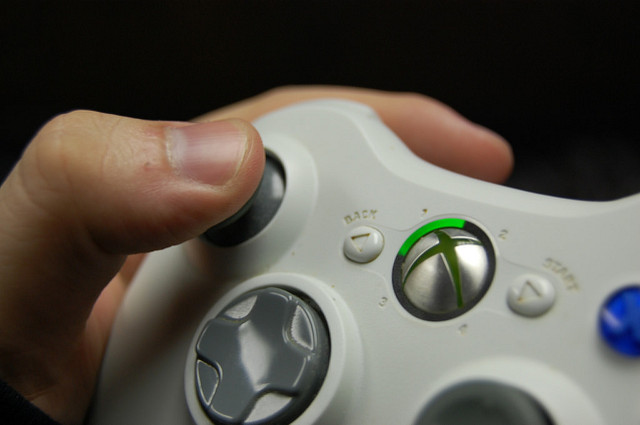Omega Plastics – The Best Designed Video Game Controllers A run-through of the best designed video game controllers of all time
Chatter for the next generation of consoles has certainly begun, especially since the new Xbox project codenamed ‘Scarlett’ was made at E3 back in June. Already, we’ve heard rumours of the new console being stream-only and not having discs at all.
There’s even speculation that Microsoft’s next home console will adopt both keyboard and mouse support. This is often an element reserved for only PC gamers, though they do allow for faster response times and more accurate playing styles. However, it has to be argued that you don’t get the same comfort as you do holding a handheld controller in your hands when playing a game.
So many console manufacturers have looked at unique and innovative ways to make controllers even more exciting and take console gaming to an entirely new level, but which is the best of all time? In no particular order, plastic injection moulding specialists Omega Plastics attempts to honour the most memorable video game controllers that have ever made it to market in this article…
The DualShock series
As used for the: PS1/PS2/PS3/PS4
Classic villains including Doctor Neo Cortex and Sephiroth have been taken on using the DualShock. A virtual weapon of choice for so many gamers over the years, the DualShock is an example of a controller design that has stood the test of time. For better and for worse.
The DualShock boasts both comfortably hand grips and a perfectly placed set of buttons. However, some gamers have pointed out their frustration at the placement of the D-Pad on the DualShock — a placement that has remained even with its most recent iteration, the DualShock 4. The D-Pad on a DualShock is situated on the left side, opposite the main buttons, meaning it has a prime location…but it’s hardly ever used. And, in truth, the D-Pad isn’t that well designed; compared to the Xbox’s circular D-pad design, it feels a little restrictive in terms of fluid movement.
You can’t deny that the DualShock isn’t a comfortable controller though, particularly when focusing on the iteration used for the PS4. The in-built speaker ramps up your immersion in a game too. Speaking of the PS4’s controller, it does feel strangely too lightweight. It has a weirdly hollow feeling, so it doesn’t feel very durable. The fact that some have survived a few Dark Souls 3 induced tantrums is nothing short of a miracle.
GameCube controller
As used for the: Nintendo GameCube
Browse through lists of the best-designed controllers ever and the GameCube controller will usually be towards the top of the pile. It’s easy to see why as well. Sturdy, comfy, and with a satisfying guide-click when the left analog stick is used, the GameCube controller is everything you need from a video game controller.
You will be forgiven for thinking that the colourful action buttons are oddly-placed when seeing the controller for the first time. In practice though, they are perfectly spaced for their role: the big green “A” button dominating the set is a fan-favourite, and as the primarily-used button, it needs to be the focus. The red “B” button a short reach across from that act as the secondary action or cancel feature, then the two “Y” and “X” buttons surrounding the main “A” button’s perimeter are lesser-used, but not unwieldly to get to.
The Z-button certainly raised a few eyebrows though. It didn’t serve much of a purpose, and was weirdly isolated from the rest of the controller. But all in all, the GameCube controller was a triumph of controller design. Which is probably why all attempts to “improve” or “innovate” the controller often feature on lists of the worst designed controllers. Remember the Resident Evil 4 Chainsaw controller? Sure, it looked cool, but it wasn’t going to help you outrun Dr. Salvador’s decidedly more well-practiced chainsaw skills.
The Wii remote
As used for the: Nintendo Wii
The Nintendo Wii U may have been a rare mis-step for Nintendo, but that was far from the case when it came to its predecessor, the Wii. A hugely popular console that sold out everywhere in the run up to Christmas 2006, part of its selling point was its motion controls, which worked via the console’s ground-breaking controller design.
A main selling point of the Wii was that it was so different to what had been released in the video games industry up to that point. Up until then, controllers had followed a pretty standard, universal design: a game pad with two hand grips (well, the N64 tried to add a third on, and it was as hideous as it was pointless) movement controls on the left, action buttons on the right.
The Wii remote presented you with two controllers, with the remote to be used in your right hand and a ‘nunchuck’ in your left hand. The revolution blew everyone’s minds and also broke a fair few fingers and TVs. There was the option of the Classic Controller Pro for those slightly more intensive games, such as Monster Hunter Tri, but the Wii remote held up well on its own for most of the games offered on the console. The concern that it would only work for “movement gimmick” games was unfounded, as sprawling, story-based games like The Legend of Zelda: Twilight Princess proved the Wii remote was comfortable, responsive, and multi-talented.
The Xbox 360 controller

As used for the: Xbox 360
There won’t be many people who will say that the entire series of Xbox controllers have been well-designed. Where the 360 and Xbox One controllers are sleek, easy-to-handle bits of kit, the original Xbox controller was almost as unruly as the Wii U controller. At least the Wii U controller had the excuse of housing an entire screen in its centre that needed it to look like a futuristic baking tray — the not-so-affectionately named “The Duke” was unnecessarily cumbersome. It was large, but it was not in charge; using this to play Soul Calibur 2 was frustrating to say the least.
Let’s focus on the delightfully designed Xbox controllers though. The 360 controller stands out as being one of the best in this line of controllers. It was sleek, responsive, and although some loved and some hated the D-Pad design, this controller was just a wholesome delivery of good design without any frills or gimmicks.
An honourable mention — the Atari 2600 joystick
When remembering the Atari 2600 joystick, Stuff.tv acknowledged that a fantastic element of this controller was its simplicity. Plus, the design is just iconic for video gamers everywhere, even those too young to have played a console that used one of these. It wouldn’t fly today, and hasn’t really stood the test of time (imagine trying to play Demon’s Souls with a stick and one button).
Here’s a challenge for you — see if you’re able to hammer the joystick’s iconic red button and manage to withhold shouting ‘Pew! Pew, pew, pew!’ as you take down enemies on screen.















